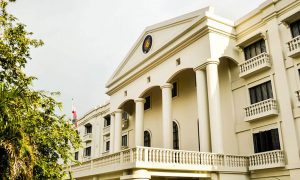GOVERNMENT agencies posted a budget utilization rate of 99% as of the end of September, the Department of Budget and Management (DBM) reported.
The DBM said the National Government, local government units, and government-owned corporations had used P3.46 trillion of the P3.52 trillion worth of notices of cash allocation (NCAs) issued as of the end of that month.
The utilization rate was ahead of the pace compared with 97% posted a year earlier.
Unused NCAs for the period amounted to P51.6 billion, the DBM said.
NCAs are a quarterly disbursement authority that the DBM issues to agencies, allowing them to withdraw funds from the Treasury for their spending needs.
At the end of September, line departments utilized P2.59 trillion or 98% of their total allocations.
Agencies that posted 100% utilization rates during the period were the departments of Interior and Local Government, Public Works and Highways, Labor and Employment, Social Welfare and Development, the Office of the Ombudsman, and the Judiciary.
The Commission on Audit, Commission on Elections, Commission on Human Rights, and Civil Service Commission also reported full utilization at the end of September.
Posting 99% utilization rates were the departments of Health and Transportation, as well as the National Economic and Development Authority. The departments of Education and National Defense reported 98% utilization rates.
Other agencies that posted a cash utilization rate of at least 90% were the Congress of the Philippines, State Universities and Colleges, and the departments of Agrarian Reform, Environment and Natural Resources, Finance, Foreign Affairs, Tourism, Human Settlements and Urban Development, Justice, Science and Technology, as well as the Presidential Communications Office.
For the second straight month, the DBM posted the lowest utilization rate with 73%.
Government agencies likely boosted public spending especially on infrastructure ahead of next year’s midterm polls, ahead of which a spending ban will be enforced starting March 28, Rizal Commercial Banking Corp. Chief Economist Michael L. Ricafort said.
“This was also due to more stringent budget utilization rules by various agencies, and amid costs involved in financing the National Government budget deficits,” Mr. Ricafort said via Viber.
“This could lead to faster government spending and could contribute further to faster GDP (gross domestic product) growth,” he added.
The economy grew 6% in the first half. To meet the lower end of the government’s full-year target, GDP growth should likewise come in at least 6% over the remainder of the year.
The Philippine Statistics Authority will release third-quarter GDP data on Nov. 7. — Beatriz Marie D. Cruz

